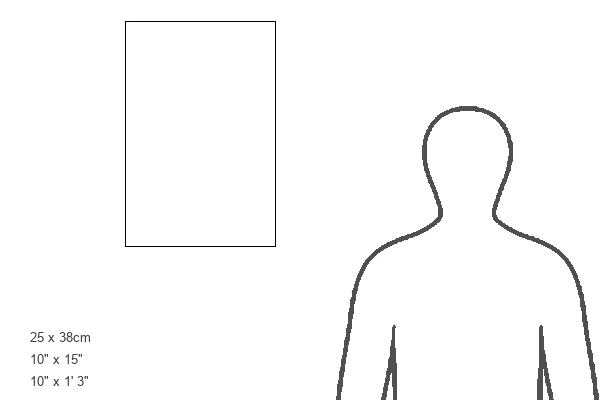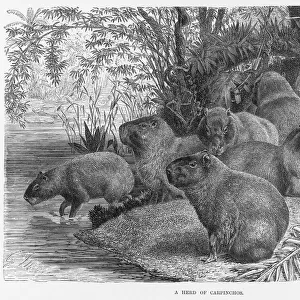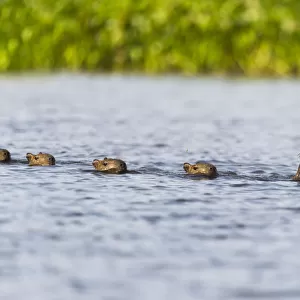Photographic Print : Capybara, Hydrochoerus hydrochaeris, and common
![]()

Photo Prints from Mary Evans Picture Library
Capybara, Hydrochoerus hydrochaeris, and common
Capybara, Hydrochoerus hydrochaeris, and common vole, Microtus arvalis.. Handcolored copperplate stipple engraving from Frederic Cuviers Dictionary of Natural Science: Mammals, Paris, France, 1816. Illustration by J. G. Pretre, engraved by Madame Rebel, directed by Pierre Jean-Francois Turpin, and published by F.G. Levrault. Jean Gabriel Pretre (1780-1845) was painter of natural history at Empress Josephines zoo and later became artist to the Museum of Natural History
Mary Evans Picture Library makes available wonderful images created for people to enjoy over the centuries
Media ID 14214983
© Florilegius / Mary Evans
Capybara Cuvier Dictionary Frederic Gabriel Microtus Pretre Stipple Vole Arvalis Hydrochaeris Hydrochoerus
15"x10" (37.5x25cm) Poster
Introducing the captivating Capybara photograph from Media Storehouse's exclusive range of Rights Managed prints. This stunning image, sourced from Mary Evans Prints Online, showcases a Capybara, Hydrochoeris hydrochaeris, in its natural habitat. The Capybara, the world's largest rodent, is depicted in intricate detail, with its expressive eyes and distinctive features that make it a favorite among animal lovers. This photograph is a beautiful reminder of the wonders of nature, captured through the lens of a skilled photographer. This image is taken from a handcolored copperplate stipple engraving from Frederic Cuvier's Dictionary of Natural Science: Mammals, Paris, France, 1816, adding a historical and artistic touch to your decor. Bring the beauty of the natural world into your home or office with this exquisite Capybara print from Media Storehouse.
High-quality poster prints are available in a range of sizes and are printed on 270 gsm semi-glossy silk finish poster paper. An affordable option for decorating any space, they are perfect for fixing straight onto walls. To ensure your poster arrives in good condition, we roll and send them in strong mailing tubes.
Our Photo Prints are in a large range of sizes and are printed on Archival Quality Paper for excellent colour reproduction and longevity. They are ideal for framing (our Framed Prints use these) at a reasonable cost. Alternatives include cheaper Poster Prints and higher quality Fine Art Paper, the choice of which is largely dependant on your budget.
Estimated Product Size is 25cm x 37.5cm (9.8" x 14.8")
These are individually made so all sizes are approximate
Artwork printed orientated as per the preview above, with landscape (horizontal) or portrait (vertical) orientation to match the source image.
EDITORS COMMENTS
This stunning handcolored copperplate stipple engraving is taken from Frederic Cuvier's "Dictionary of Natural Science: Mammals," published in Paris, France, in 1816. The illustration was created by Jean Gabriel Pretre, a painter of natural history at Empress Josephine's zoo, and later became the artist to the Museum of Natural History. The engraving was executed by Madame Rebel, under the direction of Pierre Jean-Francois Turpin, and published by F.G. Levrault. The image features two mammals: the Capybara (Hydrochoerus hydrochaeris) and the Common Vole (Microtus arvalis). The Capybara, also known as the water hog, is the largest rodent in the world, native to Central and South America. It is semi-aquatic and can be found in wetlands and grasslands. The Capybara is depicted in the image with its distinctive webbed feet and rounded ears, resting on the banks of a body of water. The Common Vole, on the other hand, is a small rodent found throughout Europe, Asia, and North America. It is an important food source for many predators and plays a significant role in shaping ecosystems through its burrowing activities. The Common Vole in the engraving is shown in a more typical posture for a rodent, with its small ears and short snout. The intricate detail and lifelike quality of the engraving are a testament to the skill and artistry of the artists and engravers involved in its creation. The use of handcoloring adds an additional layer of depth and vibrancy to the image, making it a valuable historical record of these two fascinating mammals.
MADE IN AUSTRALIA
Safe Shipping with 30 Day Money Back Guarantee
FREE PERSONALISATION*
We are proud to offer a range of customisation features including Personalised Captions, Color Filters and Picture Zoom Tools
SECURE PAYMENTS
We happily accept a wide range of payment options so you can pay for the things you need in the way that is most convenient for you
* Options may vary by product and licensing agreement. Zoomed Pictures can be adjusted in the Cart.




